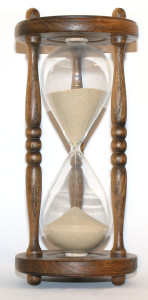Chunking.
Sounds like something that’s done to a piece of chocolate before it’s put into a cookie, but in this case it’s much more than that.
It’s a way to chop yourself back to fitness in small steps, each one building on the previous step.
Chunking is a tool used to solve a problem or complete a task. It’s when a bigger problem or issue is broken down into smaller more manageable pieces. As each piece is resolved, there is less of the whole to complete, making the overall task much less daunting.
To use a non-fitness example of chunking, let’s use one of everyone’s favourite pastimes…cleaning.
Let’s assume you haven’t cleaned your place in weeks.
You’ve got a kitchen counter piled full of dirty dishes because the sinks already full, you’ve amassed a collection of laundry hampers overflowing with pretty and not so pretty underthings and overthings, you’ve seen the dust bunnies replicating exponentially in every dark, hidden corner, and you’ve created your own leaning towers of papers piled up on every available horizontal surface.
Every time you open the door, that’s the scene you’re greeted with.
And every time, you push the thought of even starting the momentous cleaning task to the back of your mind because it’s just that overwhelming.
You don’t even know where to begin. So you don’t.
Instead, you add more clothes, more dishes and more papers to the ever growing piles. And then you repeat the same steps again tomorrow. And the day after that.
Now let’s imagine that one day, you read this blog post and it stuck in your mind. At that instant, you make a decision that today is the day that you’ll get your place clean and you’ll use chunking to accomplish it.
Let the chunking begin…
You take stock of what needs to get done in a global sense, but this time, you don’t let that foreboding sense of doom stop you in your tracks.
Using your newly found chunking skills, you decide that you’ll start your chunking with the laundry.
Because once you’ve started the laundry, you’ll have the washing time to work on another task, thus increasing your efficiency and decreasing the overall time you have to put into cleaning.
You sort and start the wash.
It’s not as bad as you originally thought (or maybe it is, but as piles are organized and distributed to the machine, there’s less of an affront to your eyes, and it doesn’t seem as overwhelming anymore ). You’ve got a load in the wash, and a few more piles patiently awaiting their turn in the machine.
You know you have roughly an hour for the cycle to complete, so you move on to your next task.
You decide that the stench of the dirty dishes is no longer tolerable, so that will be the next chunked task. As each dish is washed and dried, the counter space opens up and the once bare cupboards are now back to their glorious fullness and the kitchen is clean.
This is getting fun now!
Each completed task encourages you with the results you’re seeing, a deep sense of accomplishment washing over you with every square inch of your place becoming visible again, with every now fresh breath you take.
By this time, the washing machine has gone through a cycle, you flip the freshly washed clothes to the clothes dryer and add another load to the washing machine.
Chunked, which now gives you time to work on those papers. You sort the mail, file the receipts and recycle the unopened weekly flyers and advertisements.
And so on and so forth.
What started off as a huge, seemingly insurmountable task of cleaning your whole apartment just became a series of smaller, interdependent tasks that don’t paralyze you with their sheer scope.
As each task was completed, the overall problem grew smaller.
Now let’s use that same process with chunking your way to fitness.
Let’s say you’ve been mostly sedentary for quite a few years now. You’ve been dutifully paying your monthly gym fees, but you haven’t actually been going. You work a desk job and you have a busy social calendar, often involving socializing with good food and just as good drink.
With the above scenario, it’s possible that over the years you’ve put on a few extra pounds. Or maybe you’ve put on more than just a few, maybe 20 or 30 lbs extra and now you’ve noticed it’s impacting your health and vitality.
You’ve just identified the larger problem (you’re out of shape and overweight) and you’ve made the decision that you want to remedy it (you want to lean up and improve your fitness).
The major issue is that looking at a problem like the one above on its own often leads to paralysis.
Where do you even begin? What should you even do? What type of diet? What type of exercise? How much? At what intensity? How long will it take?
All these questions and all the questions the answers to these questions may bring…It’s overwhelming.
It’s probably better to just have some wine and cheesecake and think about them.
Well, that’s what the old you might have said, but this is the new, chunking you.
Whereas before, identifying the problem would have lead you to just quit before you even started, the new you takes that big problem and chops it up into small, manageable pieces.
You’ve taken the first step, you decided that you are ready to start your fitness journey, that you’re ready to trim down and shed those extra pounds and improve your fitness.
You want to feel energetic and vibrant again. Since we’re all about honesty, you know that leaning out would make you look good again, too.
Once that important decision is made (this is the same as deciding that today was the day you’re cleaning your place), let the chunking begin…
Since chunking involves taking a much larger problem and breaking it down into smaller, more manageable chunks, you realize that improving your fitness has two major, equally important components: exercise and nutrition. You recognize that both play different, but complementary roles in your overall health and fitness journey.
So you chunk both of them, making your bigger problem (being out of shape and over weight) into two smaller problems (lacking consistent exercise, lack of nutritional plan).
And then you chunk some more in each of those two areas.
In your exercise chunk, you know you need to start. But where and how? You could start with adding something as simple as 10 minutes of moderate to faster paced walking a day after dinner.
In your nutrition chunk instead of trying to overhaul your diet completely and putting yourself on some intense, highly restrictive and daunting diet-of-the-week, it can be something as simple as eating slower, or taking more lean protein at every meal. Something that’s just a little different than what you’re already doing but aligned with your end goals.
That’s it.
It doesn’t have to be more complicated than that.
Now instead of worrying about being out of shape and overweight, you just need to focus on and complete the two tasks you’ve decided on. That’s how you’ll work on resolving your chunked problem.
As these tasks push you past your inertia and you get comfortable doing them consistently, you can add more tasks, still keeping each task fairly small and manageable.
It may be as simple as adding 10 more minutes of fast walking for a total of 20 minutes or adding 2 servings of high fibre veggies to every meal.
In any case, all you’re doing is consistently and diligently completing very small tasks that work towards resolving your major issue without getting caught up in the enormity of “losing 30 lbs” or going from “unfit to fit” in one fell swoop.
For many of these chunked tasks, the time commitment is small, but over time, the effects add up.
Here’s the caveat with this type of chunking…
You will have to set your expectations appropriately.
Making these types of very small changes usually don’t lead to very rapid changes. These are not the changes that will give you the hyped up, gimmicky results that are plastered all over the supermarket impulse buy magazine racks. You won’t “lose 10 lbs in 10 days”, or “drop 4 dress sizes in a month”, or “build a six pack in six weeks”.
However, at these levels of change, these chunked habits are sustainable.
These chunks lower the barrier to resistance dramatically.
Tell me, which seems much less draconian to the average person:
Scenario 1: Full diet mode with restricted food items, no eating past certain times of the day, limited flexibility/control. Restrictive practices may lead to later binge eating (you know that feeling when you’re told you can’t have something). Committing substantial amounts of time to exercise in the 5-10 hrs/week range at moderate to high intensity while already deprived of energy from food. You will likely be moody, tired, fatigued, and generally irritable.
It’s quite possible that you’ll see rapid drop in weight initially (N.B. this drop may not be all fat loss, but also loss of important lean tissues like muscle – the number on the scale would just be smaller) but after this initial drop, you will likely hit a plateau (if you’re eating so little already, it’s very hard to eat even less, and if you’re already exercising so much, it’s tough to add more in).
Scenario 2: Chunking both exercise and nutrition. Making one small change in each area such as eating each meal slower (20-30 minutes rather than scarfing down meal) allowing hunger cues to dictate how much you really need to ingest, eating 2 or more servings of veggies with each meal, or making sure that each meal has a lean source of protein. Adding one small element of exercise daily such as a 20-30 minute brisk walk after dinner, a short morning swim before work or a circuit-based body weight workout building up to 3-5+ hrs of moderately vigorous activity a week.
With the above, there will likely be very little initial change in weight or appearance but the new chunked habits are not drastic and would cause very minimal disruption to current habits and behaviours. Over time, these would lead to fairly significant yet sustainable changes. Your new fit, healthy lifestyle.
I think it’s pretty easy to see which one of these two choices is more comfortable, and more importantly, sustainable over the long term.
And that’s where results will be found.



(inside Peak Performance Golf)